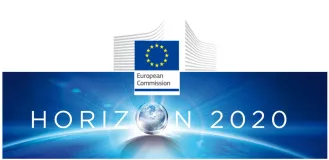DISIRE
Relevant project information
Dates
Project website
Role of CIRCE
Grant agreement number
Funded by

Description and objectives
With the DISIRE project, the properties of raw materials and product flows will be integrated, through their transformation, into a single on-line measurement system.
This system will provide a high level of knowledge about the internal dynamics of the ongoing processes during the transformation or integration of raw materials into the next production levels.
Through this approach the Integrated Process Control system, instead of requiring external experts to analyze the process, will allow through DISIRE to perform auto reconfiguration of all production lines with information from the products themselves.
To evolve, in terms of sustainability, the existing industrial processes of multiple industrial sectors (ferrous, non-ferrous, chemical and steel industries) through energy and resource efficiency.
Specifically, this will be done through the innovative technologies and concepts developed by the DISIRE technology platform in the field of Industrial Process Control (IPC), such as flue gas oxygen sensors, computational fluid dynamics (CFD) simulation of combustion and diagnostic techniques by imaging natural gas flame patterns.
DISIRE will create a specific Process Analysis Technology, capable of defining quality and performance requirements that, for the first time in the process industry, can be directly applied on the physical properties of the developed products.
CIRCE is leading the work aimed at improving combustion efficiency in cracking furnaces through advanced characterization of natural gas flames.
Value proposition
The tasks to be carried out by CIRCE can be encompassed in:
- Analysis of the most appropriate O2 sensors for the characteristics of the cracking furnace.
- Analysis of CFD results regarding the most optimal location of the sensors in the furnace.
- Flame and combustion characterization using non-invasive optical instrumentation
- Development of algorithms for combustion control
- Optimization of combustion efficiency in cracking furnaces
- Implementation of a control system based on O2 sensors and non-invasive optical instrumentation.
Using our own methodology, we identify the environmental and socioeconomic risks of the materials that make up our products in order to issue eco-design recommendations, improve their recyclability and minimize manufacturing costs.


